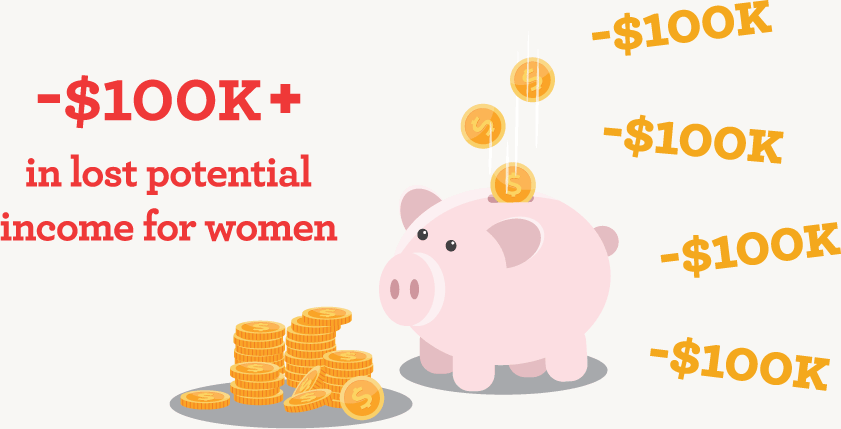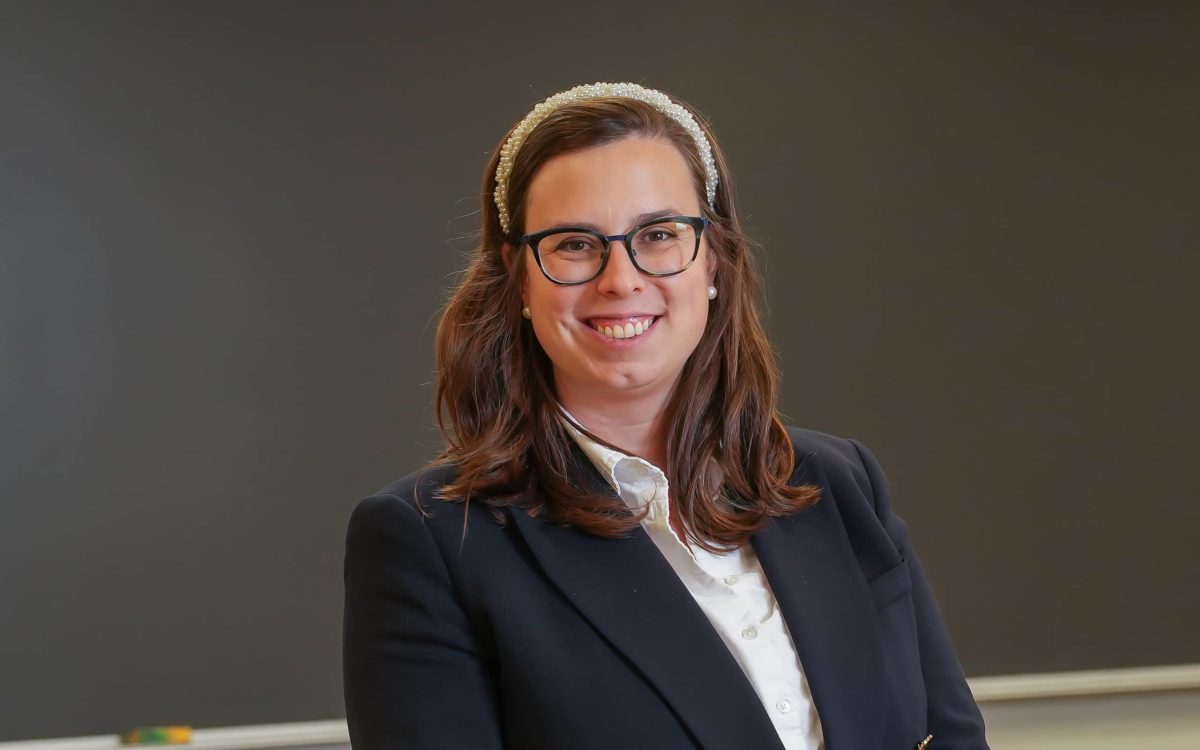He Said, She Said: Language and the Gender Wealth Gap
Dr. Lauren Hearit
Many of us are familiar with what’s called the gender wage gap, or the difference between the average pay of men and women. According to the Pew Research Center, women in 2022 earned just 82 cents for every dollar that men made, leaving a gender wage gap of 18%.

As serious as this is — and Dr. Lauren Hearit, assistant professor of management in Hope College’s Department of Economics and Business, is quick to insist that it is a serious problem — the gender wage gap may be far less concerning than the gender wealth gap.
Haven’t heard that phrase before? Not to worry: Hearit hadn’t heard it either, until she listened to a podcast while walking her dog.

“I was floored to learn that women live, on average, five years longer than their male counterparts, but they’re investing cents on the dollar compared to their male counterparts,” she says. Because they invest so much less, when their investment earnings are wrapped into calculations of the difference between men and women’s wealth, the gap in their average net worth is a staggering 68%. “Over the course of a woman’s lifetime, you’re talking about hundreds of thousands of dollars — or more — in lost potential income.”
Hearit, who’s trained in organizational communication and now applies that knowhow to marketing and management, is well equipped to think about how messages from a range of sources may drive people’s economic behavior.
“I was floored to learn that women live, on average, five years longer than their male counterparts, but they’re investing cents on the dollar compared to their male counterparts… Over the course of a woman’s lifetime, you’re talking about hundreds of thousands of dollars — or more — in lost potential income.”
“It’s tricky: I kind of tick off quantitative people and I kind of tick off rhetoricians,” she says with a laugh. “My metatheoretical frame is that I think words matter and that they shape how we act. I’m at this intersection of economics and communication: What is the quantitative weight of what we say? That’s what I’m super interested in.”
So in 2021, she teamed up with Dr. Katharine Miller of Marquette University to scour prominent financial publications for language that might influence women’s choices regarding investment.
There hasn’t been much research on the topic, she reports. But studies that do exist point to media communicating what she tactfully calls “old-school ways of thinking about things.” One commissioned by the (female) CEO of a large bank in the U.K. “basically found that women were told, ‘Skip the latte, don’t buy the shoes, clip coupons, save money, be frugal.’ But men were told, ‘Go ask for a raise” — or, almost immediately, ‘You need to be investing.’ The language and the framing of that financial advice in those publications was fundamentally different.”
(Can you feel the righteous indignation rising inside you?)
“Some of the existing research found that 65% of financial articles in women’s magazines — this is broader than the financial news media — categorized women as excessive spenders, whereas 70% of financial articles in men’s magazines focused on making money. So that was sort of the starting point for our research.”
As an analytical device, Hearit and Miller anchored their study in agenda setting theory, which looks at how media shapes perception not by telling people what to think, exactly, but by telling people what to think about.
Poring over issues of Kiplinger Personal Finance and Forbes published over two years, they found 53 articles written explicitly for women. “It was 230 pages of single-spaced data,” Hearit reports. “Then we went through and, as a coding team, looked for what stories are being told, what themes are emerging, and whether there are any common or repeated words or phrases that would then begin to shape your understanding of what it looks like if you’re a woman looking for advice.”
While they didn’t find much advice explicitly for women, they did find gendered language expressing themes such as that women should be afraid of one day being alone, and that men rule this world.
Some writing implied that women lose when it comes to finance. “A lot of the financial advice was around how being a woman is an inherent disadvantage,” Hearit explains. Some articles framed that for women, investment is less about bettering oneself than about helping others: one’s husband, one’s children, or women as a group. “It’s very heteronormative,” Hearit says. Often, the language writers chose also pointed to the gendered nature of the financial industry, which is overwhelmingly dominated by men.
She’s understandably hesitant to speculate about why these messages surface in Forbes and Kiplinger. The paper she wrote with Miller and student researcher Elsie Craig ’25, and submitted to a journal this fall, isn’t meant to lay out why it’s happening, but whether it is happening and to what extent.
Exploring the “quantitative weight” of the messages we receive is not new to Hearit. She has written in the past about the broad impact of messaging by central banks and other financial institutions, starting with her doctoral dissertation. In it she built on the work of Douglas Holmes, who observed in his book Economy of Words that (as Hearit simplifies it) “the Federal Reserve says something, and there’s a market reaction.” To explore that, she coded and quantified the language that Fed chairmen used during economic crises over the past 50 years. Her research documented a relationship between the performance of the economy and what the Fed chairs say before Congress during economic crises.
“My Ph.D. is in organizational communication, but I’ve always been interested in how the Fed talks about the economy, and how that shapes our expectations for what the economy is going to do,” Hearit says. “And I thought the gender wealth gap was an interesting extension of that work. I mean, we’re clearly communicating something different to men or women. How does that shape actual behavior?”
“I’ve always been interested in how the Fed talks about the economy, and how that shapes our expectations for what the economy is going to do… And I thought the gender wealth gap was an interesting extension of that work. I mean, we’re clearly communicating something different to men or women. How does that shape actual behavior?”

